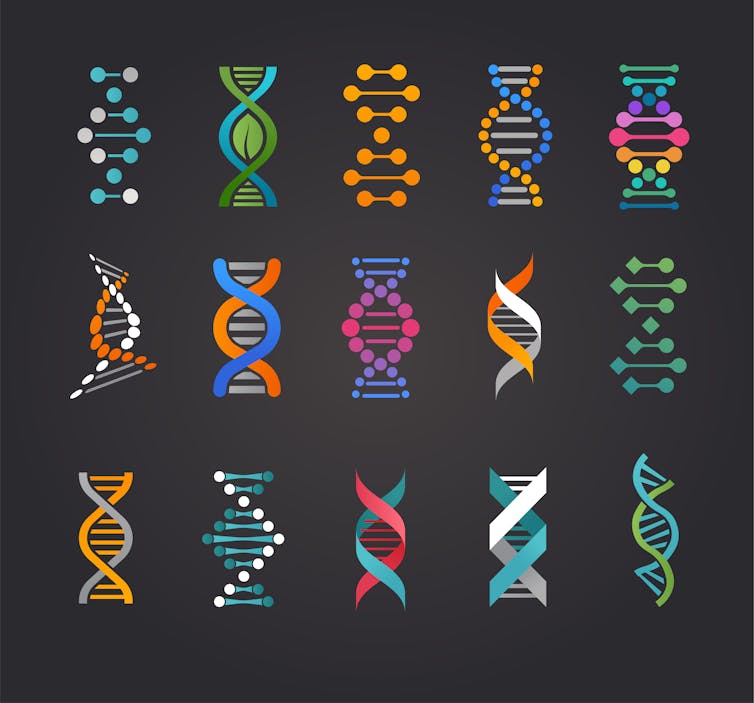Genetic factors play a major role in schizophrenia but scientists are only now beginning to identify the specific genes involved. A new study published in Nature Neuroscience shows that rare mutations in the SETD1A gene dramatically increase the risk of developing schizophrenia. This implicates a specific biological pathway in schizophrenia, which may also be of significance beyond the condition.
Brain development
Patients with schizophrenia can experience hallucinations and delusions, as well as a lack of motivation and problems with social interactions. Schizophrenia affects around 1% of the population. There is no cure and better treatments are desperately needed.
Most scientists believe that the symptoms seen in patients with schizophrenia result from changes in the way in which the brain develops. These changes result in part from environmental factors (such as birth complications), but genes also play a major role.
The genetic basis of schizophrenia is complex. There are hundreds, if not thousands, of genes that contribute to a person’s risk of becoming ill, meaning that genetic samples from huge numbers of patients and healthy people are needed to prove the involvement of a given gene.
To add further complexity, there are lots of difference types of genetic changes that can occur within these genes to alter risk.
At one end of the spectrum are individual “letter” changes in the DNA sequence that that are common in the population as a whole, and individually have only a tiny effect on risk. At the other end of the spectrum are large-scale DNA changes, for example the deletion or duplication of whole genes, or groups of genes, which are rare but have a much greater effect on the likelihood that someone will become ill. Both these small, common variants and large DNA changes can be easily measured and analysed, and both have been shown to be important in schizophrenia. However, small-scale genetic changes that are rare are much more difficult to detect and might also be involved in schizophrenia.

Rare mutations
The new study by researchers at The Wellcome Trust Sanger Institute looked for rare, small-scale genetic changes that are associated with schizophrenia. To do this scientists used a technique called “whole-exome sequencing” which examines the full DNA “letter” sequence of the parts of genes that encode the proteins that perform tasks in cells.
They then examined the sequence data for mutations that are predicted to be particularly disruptive: those that either reduce or abolish the resulting protein (so-called “loss-of-function”, or LoF, mutations), or which dramatically alter its sequence (“missense mutations”).
They found, like a previous study, that patients with schizophrenia had, on average, a higher number of these rare but disruptive LoF mutations compared to healthy people. Most strikingly, they found that these mutations in one particular gene – SETD1A – were associated with schizophrenia and a 35-fold increase in risk of developing the condition. Although extremely rare, SETD1A LoF mutations were only found in schizophrenia patients – none were seen in healthy people.
When they looked at the individual patients with schizophrenia who had LoF mutations, they found that a number of them had evidence of learning difficulties. They were also able to find evidence of SETD1A LoF mutations in children with developmental disorders, which suggests that SETD1A mutations do not necessarily increase risk of schizophrenia per se, but may affect brain development more generally.
Towards treatment?
By themselves, these findings have few direct implications for patients: SETD1A LoF mutations are extremely rare, so these results are unlikely to be of direct benefit in terms of diagnosis or treatment. However, they add to a growing body of evidence implicating a specific epigenetic process in schizophrenia.

Epigenetic modifications (which can come from environmental factors, although not exclusively) alter the structure of DNA to affect the way in which genes function without changing the DNA code. One such process is called histone methylation. Histones are like cotton reels, with DNA wound around them. The more tightly-wound DNA is, the less able it is to be converted into proteins – which go on to perform crucial functions in the body. The SETD1A gene itself plays a part in regulating this process, which can affect the production and function of many other proteins.
So a SETD1A mutation makes the developing brain vulnerable – although exactly which disorder does, or does not, occur as a result will likely depend on other genetic and environmental factors.
Several studies, including this one, implicate histone methylation in schizophrenia. And this process (including changes in SETD1A) may influence the activity of multiple genes to have profound effects on brain development, thereby altering risk for developing schizophrenia and other developmental disorders. These studies, therefore, provide further evidence that targeting this pathway might be of therapeutic benefit in schizophrenia and other developmental disorders.
This study confirms that genes play a critical role in shaping the developing brain. However, it emphasises that genes do not respect diagnostic boundaries and that there is significant overlap between schizophrenia and other brain development disorders, such as autism and intellectual disabilities. Ultimately, understanding these relationships will be key to understanding these disorders and developing better treatments for patients.

